In which Rebecca explores how the mess left over from a creative project might have artistic merit of its own.
Dear Reader,
Clearing up after a project is generally the least appealing part. In fact, even our bedroom floor bears testament to how I feel about the task – yes, Jim, if you’re reading this, that’s what you call ‘the floordrobe’.
When I was growing up the rule was that anyone in the household wanting to bake a cake would be responsible for clearing up afterwards – a usually very sticky sticking point for someone like me who enjoyed the making and eating parts of the project, but for whom clearing up was never part of the plan.
Back then I’d be reluctant even to reach for a cloth if my morning toast landed butter-side down, but I’ve always taken pleasure in the creative delight attached to the mess which making art can leave behind.
I call it the craftermath.
CRAFT
/krɑːft/
To make or produce with care, skill, or ingenuity
AFTERMATH
/ˈɑːftəmɑːθ/
The consequences or after-effects of a significant event
CRAFTERMATH
/krɑːftəmɑːθ/
Post-project creative chaos
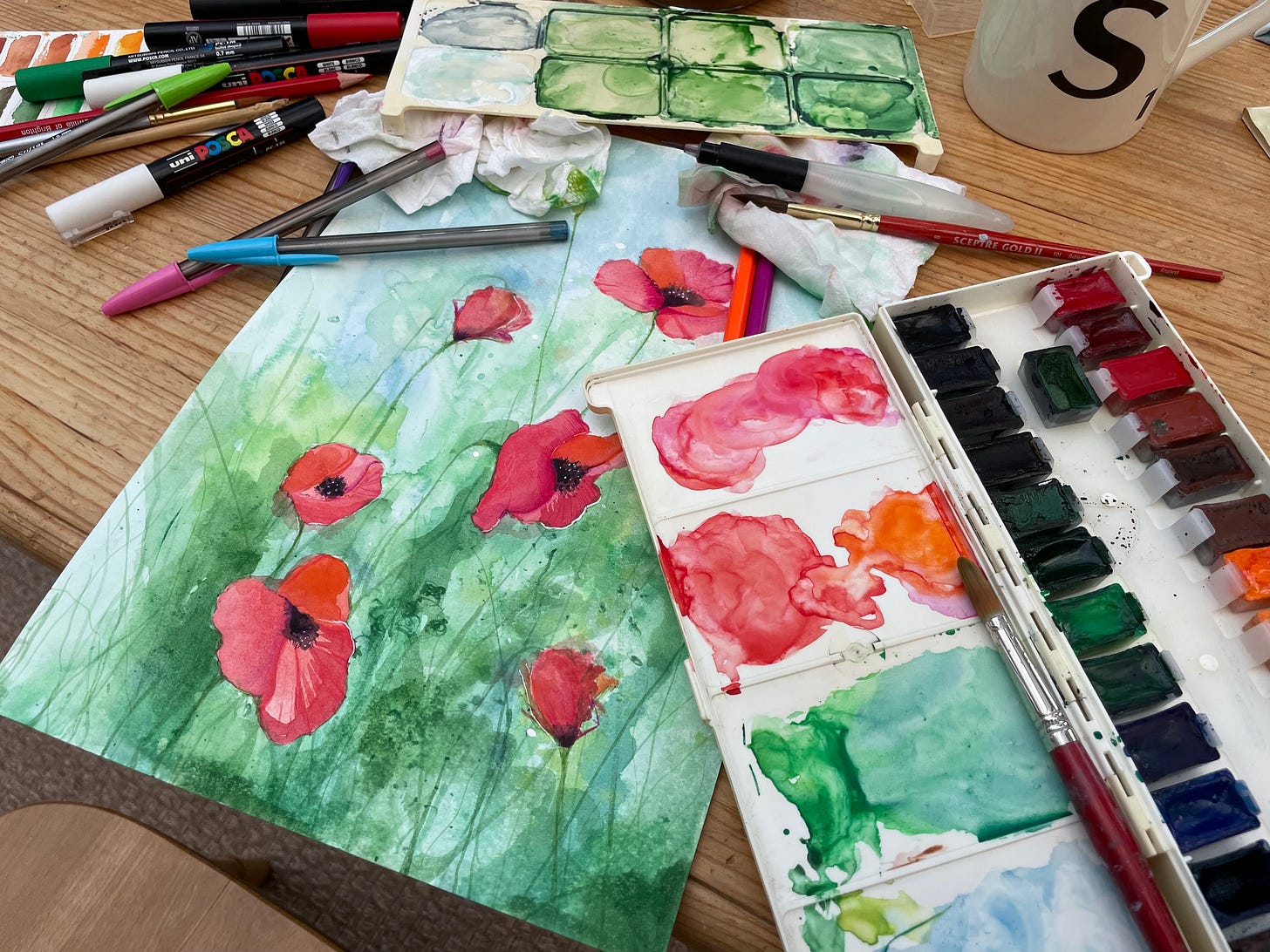
How the craftermath can inspire the next piece of work
In my former life as a glass artist people would often ask me how I’d come up with my colour combinations.
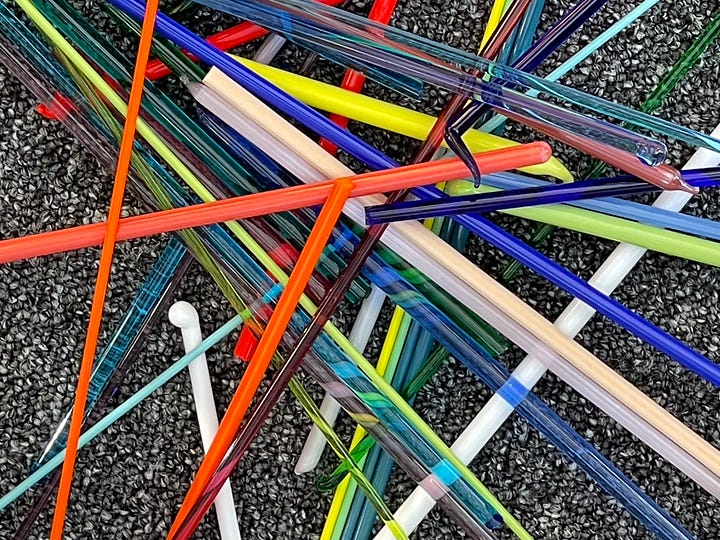
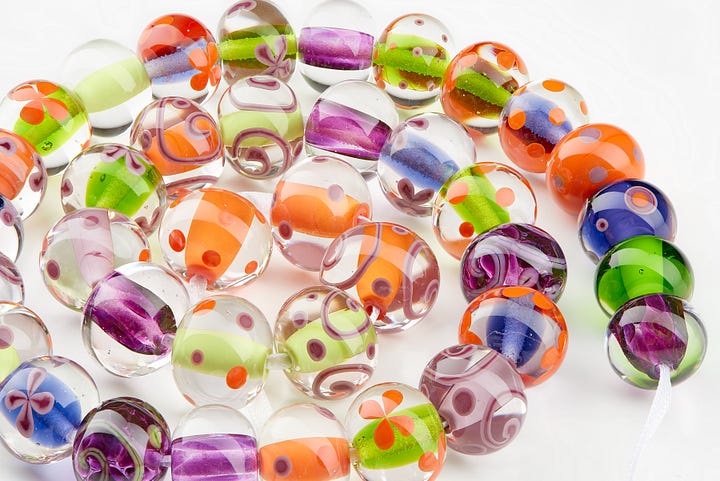
Although I’d always clear and sweep my workbench after a day at the torch flame I would never, ever rearrange the pick-up-sticks prize of randomly-arranged glass rods discarded haphazardly in angular heaps. Instead, I’d deliberately leave them to lurk all night, and every new day the first thing I’d do would be to see which of these would call to me in combination.
Every new day’s work would begin with the craftermath of a previous day’s project as a no-pressure creative workout to get my artistic juices flowing.
It is no surprise that I would always struggle to undertake commissioned work, because I was always drawn to what I felt moved to make. To me my craft was all about exploring happy accidents; to play my way through experiments in colour on a daily exploratory journey.
A happy accident can add a certain something to a work in progress
An incidental artefact appearing on a sketchbook page can become part of the art – a blot on a piece of paper right in the middle of the sky might make a bird in flight; a green run of paint in a splashy rendering of a wildflower meadow could evolve into a tree, a stalk or a stem. I love to embrace the unexpected.

Life lessons
Life throws us all sorts of things we can’t control, and in the creative space, heck, I don’t want control. I’ll work with what I’ve got, thanks; I’ll make the most of my mistakes and celebrate the happy accident.
Our lovely artist friend, M, who so kindly supported me through a nightmarish experience with my GCSE art coursework, had plenty of tips. She had urged me never to clean my messy watercolour palette after its last use, because I might want to use those colours next time. Ever since then I have always left my palette to dry rather than wiping it off, and that way I know that opening my paintbox will always feel like opening a gift to myself.
I’m always grateful for that contribution from my past self.
Is the craftermath only a mess, or does it count as art itself?
I dropped my crayons on the beach. Is this scene ‘art’?
These weaving samples were made by Mum during a recent workshop. The beautiful squares are yarn wrappings she’d created in order to assess relationships between colours.

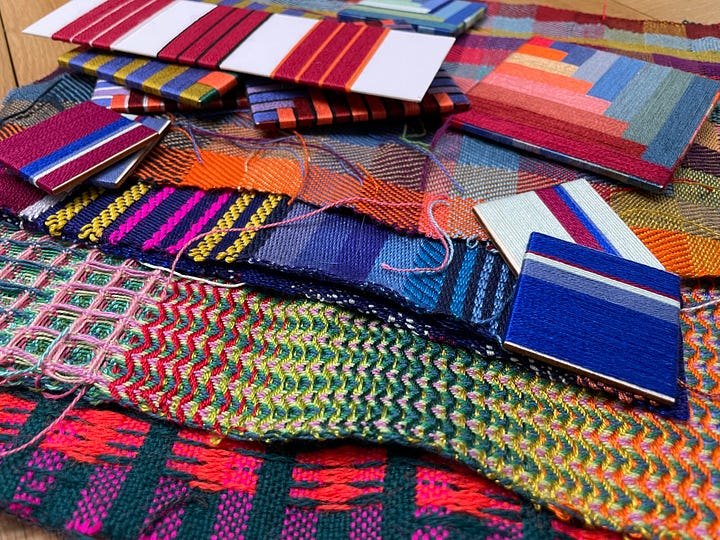
And this collection of snipped threads is the craftermath of the workshop:
This is my painting hanky, which lives in my art kit and shows off pretty much every colour I’ve ever used… at its worst! Definitely not art… but it certainly represents the craftermath.
The paint rag
Although my painting hanky can’t claim very much at all in the way of artistic merit, Mum’s paint rag is another story entirely.
Mum’s recollections of her first silk-painting course years ago don’t include anything at all about what the workshop had covered, but she’s been the proud owner of this beautiful scarf ever since:
Workshop participants had all been given paint applicators – essentially sponges on sticks – and little containers to fill with their chosen colours of silk dye to use in their own work. In addition to the silk they’d be working on to create their projects, the tutor had also handed each of them a large square silk scarf finished with a rolled hem. ‘There you are,’ he’d said, ‘use that as your paint rag.’
The idea had been to use the scarf for dabbing dye from the applicators, testing colours and perhaps dealing with any runaway puddles if their project piece had become too saturated with dye.
At the end of the session participants were asked to clear their work spaces; a job which entailed disposing of messy mixes of expensive fabric dye. There was plenty left over, and people began to clear their containers away in order to empty them down the sink and rinse them clean.
Mum was determined not to waste a drop of her leftover dye, and once she’d wiped her sponges onto her ‘paint rag’ scarf she dipped it into each of the containers in front of her. She even asked her workspace neighbours if she might do the same with their remaining dye, and before long her scarf had been dipped into an entire rainbow by way of a corner here, a folded bundle of silk there. She found that adding dye on top of dye was interesting: colours on top of each other didn’t really mix, but just moved around each other. She kept building up the layers without very much thought about colour placement; for her it was all about not wasting the precious dye.
Her neighbours long gone, Mum popped her damp ‘paint rag’ scarf into a polythene bag and cleared up the craftermath which remained after her reclamation efforts were over.
I interrupted Mum’s story. ‘And you really can’t remember what your actual project had been?’
‘No. But doesn’t matter; for me the paint rag was the thing – it was the best bit. Once I’d steamed it and washed it and ironed it I was in love. I’d loved the process; I’d loved the vibrancy of the dyes.’
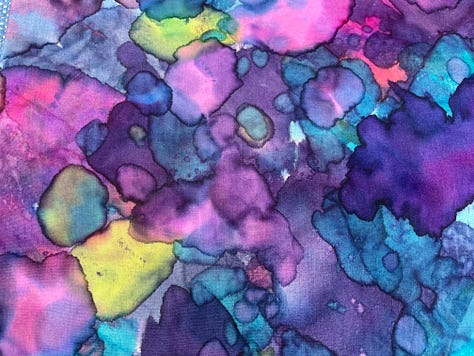
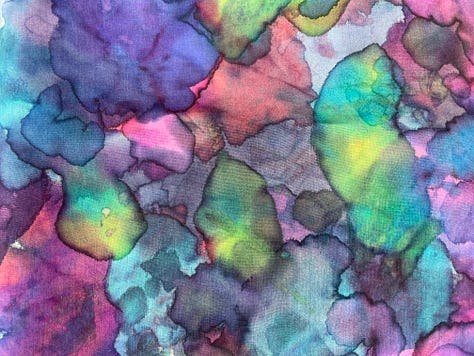
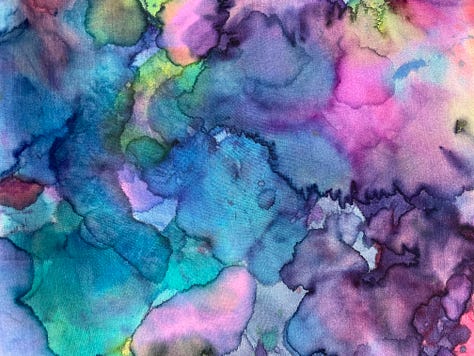
Spurred on by her first foray into painting on silk Mum took a longer course with the same tutor at his studio, where she painted a design reminiscent of a stained-glass window on a piece of silk a metre long and three metres wide which was later made into a dress.
She complimented the tutor on the space she’d been working in, and told him how nice it had been to have been able to spread such an expansive piece of cloth out across such a large surface. ‘Actually, I’m selling this tabletop’, the tutor told her, pointing at exactly where she’d been working.
Reader, that evening the table arrived at our house after a perilous journey across two counties lashed to the roof of Mum’s Austin Montego.
Dad was not surprised. ‘Did you made such a mess of the table that you had to bring it home?’
🤣
Although the sticky scraps of my past self’s exuberant childhood baking projects would always remain long enough to incite the irritation of any subsequent kitchen user, my future arty self is always grateful for any dried-out watercolour on my unwiped palette.
And it is clear that the craftermath, whatever form it takes, can be a thing of beauty in its own right or a source of reference for another piece of art, and it even has the potential to cross media and genres. For me today it’s been a writing prompt.
The square splotch on the conservatory rug that had remained for years after I dropped my gel plate butter-side down paint-side down had made a whole load more mess than an upended slice of toast would have done, but at least it makes a story.
Might a toast-shaped splotch of butter on a rug ever be considered a piece of art? Hmmm. Maybe I should just wipe up my mess.
Love,
Rebecca
📚 Regular readers will be no strangers to my ongoing light-hearted correspondence with fellow Brit Terry Freedman of
. It’s his turn to write to me next Wednesday. In the meantime you can see all of our letters here.If you’ve enjoyed reading this post please let me know by clicking the heart. Thank you!
Thank you for reading! If you enjoy ‘Dear Reader, I’m lost’, please share and subscribe for free.









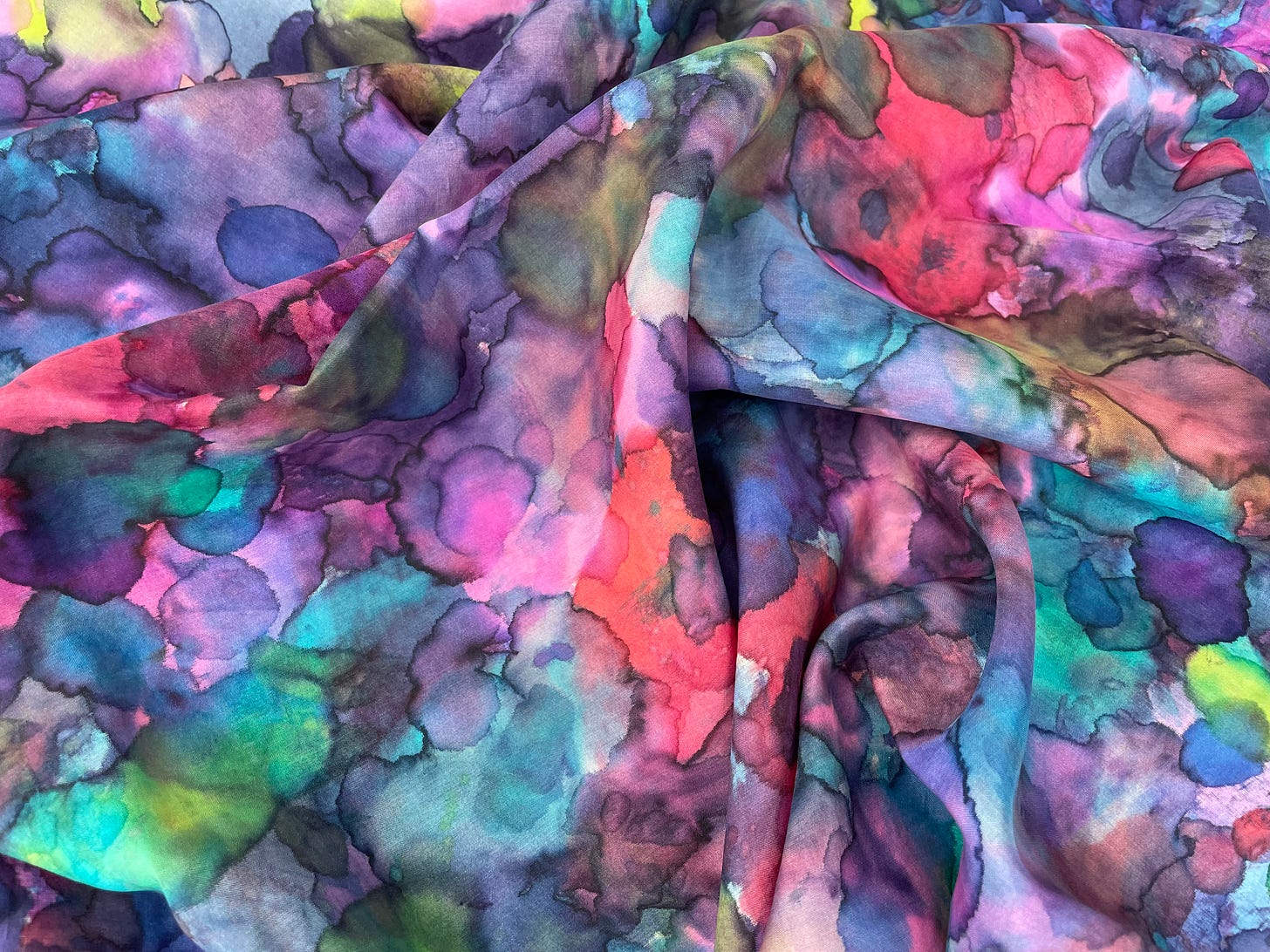
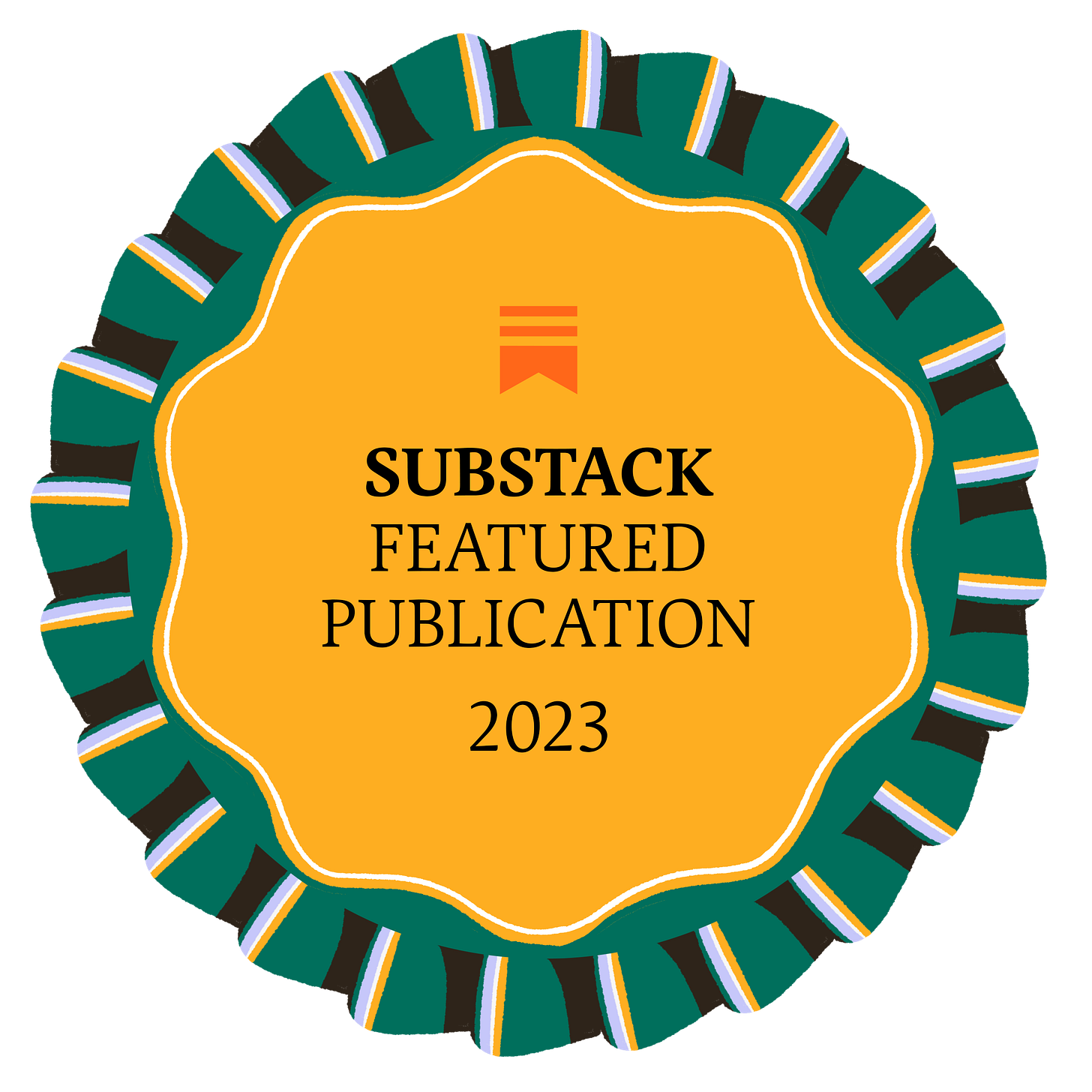
I read an article once about the messiness of creative people being an essential element of the creative process!
Also, “floordrobe” is genius and very me and I’m adopting that word as my own! 🤣
I love your poppy painting and your mom’s scarf! And if a banana tapped on the wall can be art, why not a butter-soaked toast shape on the carpet?